Effect of fermentation on the development of coffee flavor during treatment
Follow the caf é (Wechat official account vdailycom) and found that Beautiful Cafe opened a small shop of its own.
In 2015, Sasa Sestic won the first place in the WBC World Barista Competition, where coffee beans were treated in a groundbreaking way by injecting carbon dioxide into the container to soak and ferment the opposite beans. Two years after the game, Sasa now owns its own coffee farm and specializes in fermentation.
In fact, last month's Sasa also gave a speech on fermentation in Budapest's Re;co-- how to control the development of flavor through fermentation, the quality of coffee, and the stability of the price. The following is the practical information.
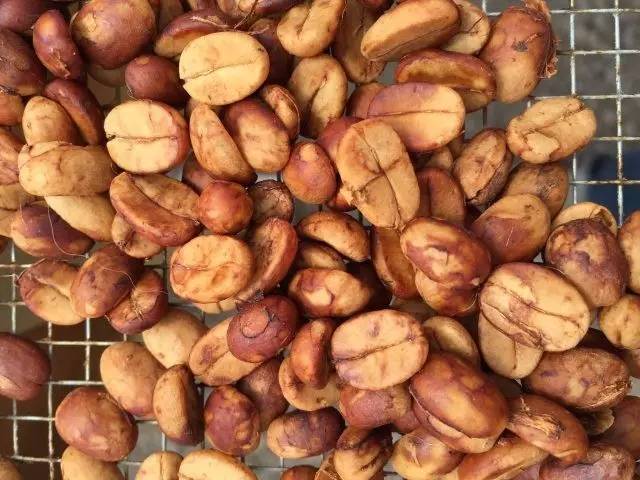
Study the cause of [fermentation]
Why should we study the process of fermentation?
One of the important reasons is that we know very little about fermentation, and fermentation is very important.
In Re;co, Sasa said: "after exploring different coffee producing areas around the world, testing coffee with more than 50 coffee farmers and testing different treatments, including my own estate, I realized that even with traditional treatment methods, there are still a lot of variables and instability, and most of the causes of instability come from the fermentation that occurs during the process."
And, in fact, fermentation has a direct impact on the quality of coffee, proper fermentation can improve the quality of coffee, improper fermentation will also reduce the quality of coffee. The effects of these fermentation, in a series of cases, can also result in a cup score gap of at least 8 points.
Those who understand the cup testing system will understand that the vast majority of boutique coffee scores are between 80 and 92 points, more than 90 points are very few, and the score difference of 8 points is a very huge gap.
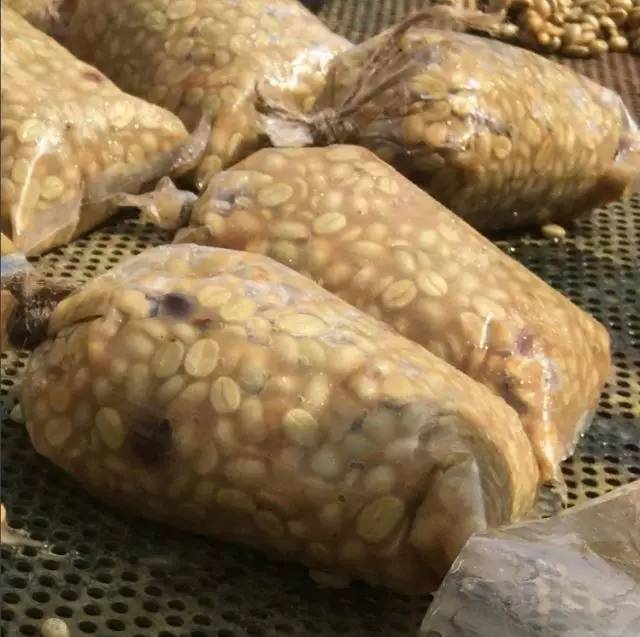
The experimental batch of frozen fermentation of Sasa, the cup test score was 87.5 points.
What is fermentation?
So what is fermentation?
Simply put, fermentation is the process by which sugars and starches are decomposed into acids or alcohol.
But what we need to pay more attention to is that yeast and bacteria are very important elements in the fermentation process.
Sasa said he was using a yeast called sacromises cerevisiae. This yeast is a naturally occurring wild yeast found in grapes, cocoa, and many other fruits. It often occurs in the processing of wine and cocoa beans, as well as the processing of raw coffee beans.
The bacteria used by Sasa in the treatment process are called lacto bacillus.
In the natural fermentation process of coffee, different microorganisms are involved in the fermentation process, and the enzymes produced by yeast and bacteria will decompose the sugar in pectin / mucus.
As a result, the sugar in coffee will degrade lipids, proteins and acids in coffee and convert them into glycolic acids. This process will also change the smell, color, PH (pH) and tissue structure of coffee mucus.
In fact, coffee farmers now develop many different types of fermentation, but two of them are the most noteworthy, that is, dry fermentation and wet fermentation.
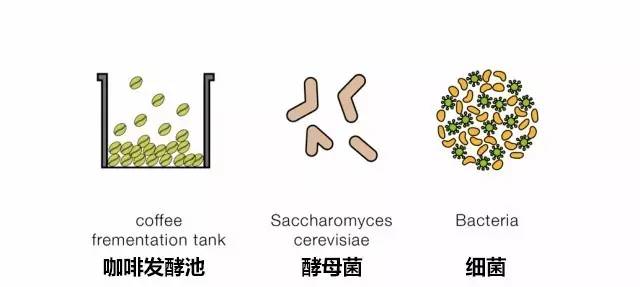
The materials used in the fermentation process, the picture is from Sasa's speech.
Dry fermentation and its flavor development
One of the sites where Sasa is used to study fermentation is the traditional fermentation tank, which is covered with concrete (pictured below), and then at the estate of Sasa, the berries are peeled and mucus-filled shelled beans are placed in the pool for dry fermentation.
An unfinished fermentation pool in Ethiopia
This dry body fermentation process will increase the sweetness of coffee and the flavor of chocolate and fruit.
But this method of dry body fermentation also brings a problem: controlling the temperature.
Once this kind of fermentation occurs in the sun, with the rise of ambient temperature, the speed of fermentation will also be affected. If the temperature can not be controlled properly, it will have a negative impact on the consistency of coffee quality and flavor development.
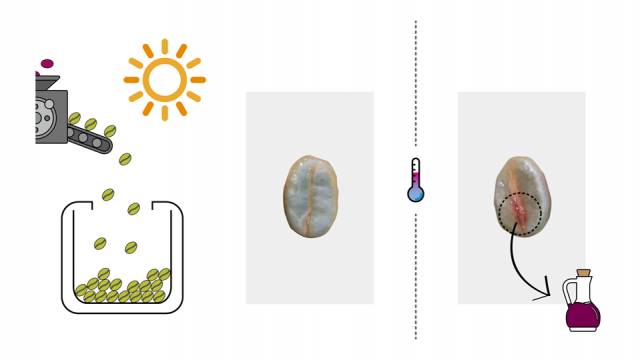
Effect of temperature on dry fermentation
In the image above, the coffee bean on the left has a fermentation time of 24 hours and an average fermentation temperature of 16 ℃. The treated coffee tastes good and has a good flavor and balance.
We also fermented the coffee beans on the right for 24 hours, but the average fermentation temperature was 26 ℃, which was 10 ℃ higher than that on the left. the appearance of the raw coffee beans was caused by the coffee beans fermented for too long.
If the fermentation time is too long, glycolic acid will dominate the fermentation, and the coffee beans will have some very bad flavor descriptions, such as the taste of vinegar, dry taste, and even a metal-like taste.
Wet fermentation and its flavor development
Wet fermentation methods, friends or colleagues who are familiar with coffee must have heard a lot, such as: double washing, double fermentation, Kenyan washing and so on. Because of the high cleanliness of coffee treated with wet fermentation, this way of handling coffee is very common in East Africa.
Sasa shares the research data with us that the effect of wet fermentation on coffee is not just in terms of cleanliness.
After we peel the berries, we put the shelled beans with mucus into the water. Water helps prolong the fermentation time and gives the coffee a softer Body, complex acidity, and more subtle flavor.
Although the performance of the above description seems to be very good, it does not mean that there is no point to pay attention to in the handling of coffee.
The inconsistency of temperature and water quality are the difficulties of wet fermentation.
Sasa mentioned in his speech that a few years ago, he went to Raul Riviera, the owner of Santa Rosa in El Salvador, to do relevant experiments. At that time, Rain Water was used instead of spring water for wet fermentation. as a result, Rain Water absorbed a large amount of fruit and sugar from the coffee berries. The same variable, only the water is inconsistent, the score difference is as high as 5 points. Rain Water's fermented coffee tastes mundane and has no characteristics at all. (see figure below)
Below, on the left is a fermented coffee berry soaked in spring water. The fermentation time is 30 hours and the PH value is 7.5 TDS180. On the right side is the use of Rain Water soaking fermentation, PH value of 6.5 (more acidic), TDS 30.
Therefore, in the future research and treatment, we also need to know more about water quality. How do different types of water affect the fermentation of coffee?
More data, better coffee.
Sasa's research on coffee treatment is rare in the coffee industry, and it can be said that Sasa is a pioneer in this industry. From his latest ice treatment (more details of this treatment are confidential until the publication of Sasa's new book) to the familiar red wine treatment (carbon dioxide injection immersion mentioned above), he is at the forefront of the industry.
Since there is almost no relevant research and literature in the coffee industry, Sasa has to switch to the study of red wine and beer production.
Sasa has to mention one person here, that is, the owner of the Clonakilla brewery, Tim Kirk. Because when Sasa first visited Tim, Sasa was impressed by Tim's knowledge of the climate.
Tim knows a lot about the rainfall and rainfall in his vineyard, the temperature of the wind, and how these factors will affect the flavor of his wine. This is very powerful, so in-depth understanding of the climate and a clear understanding of the impact of these factors on the final product is exactly what is needed in the coffee planting process.
Owner of Clonakilla Brewery: Tim Kirk
But Tim does not have a deep understanding of the impact of climate because he chooses to control this series of climate variables.
Tim controls the temperature and humidity of the fermentation environment, because the flavor and flavor complexity of wine are different under different temperature and time. He uses a double-layer insulated stainless steel container to increase the stability of fermentation. The values of PH, alcohol and carbon dioxide are monitored and recorded to ensure that they achieve the quality consistency required by Tim.
It is precisely this kind of data-dominated production that has changed Sasa's view of coffee processing. And Sasa has thus changed the way he handles coffee.
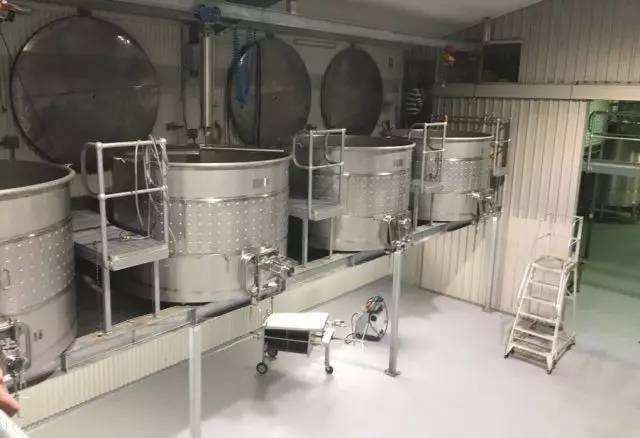
Double-layer stainless steel containers from Clonakilla Brewery
Experiment on Coffee fermentation
After studying other industries, Sasa has been hoping to make an amazing coffee, imagine if you can drink a coffee with the best characteristics of washed and tanned coffee, and have obvious regional characteristics and iconic flavor, this is a wonderful thing.
And after going to the brewery, Sasa has been hoping to emulate Tim and create a technology that can be replicated at the coffee farmer and farm level (a top priority in the production process)-a technology that can improve the aroma and flavor of coffee and adjust the balance between sour and sweet coffee.
The following is the process of Sasa:
Step 1:
First, put the peeled berries in a stainless steel container. The reason for using stainless steel containers is to make coffee more clean.
Another reason is that it is convenient for workers to move the container to different rooms so that fermentation tests can be carried out at different temperatures. And it is also easier to seal these containers.
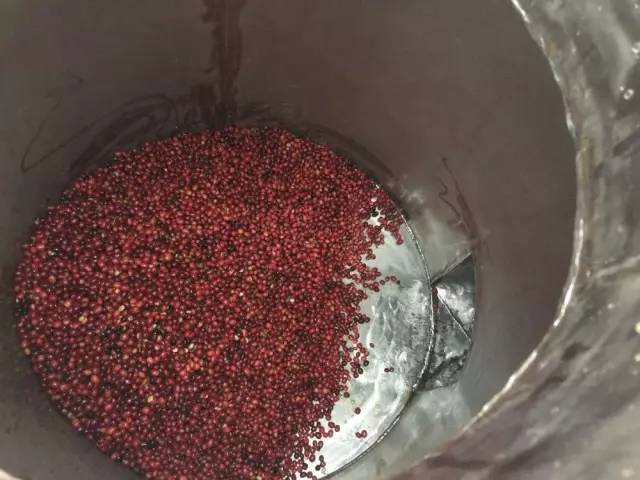
Coffee berries placed in stainless steel containers before fermentation
Step 2:
The second step is to place these containers reproduced in raw beans indoors, and the indoor temperature will be strictly controlled.
Sasa has been collecting data on temperature control and the effects of temperature on coffee processing and fermentation to better understand the effects of this variable.
After a lot of experiments, Sasa also began to have some preliminary conclusions, and the results of these data are very valuable--
"if you want the coffee to show complex acidity, you need to ferment the coffee at 4-8 ℃."
"if you want the coffee to have a higher sweetness, you need to ferment the coffee at a relatively high temperature, about 18-20 ℃."
Step 3:
After moving to the indoor area where the temperature is controlled, next, seal the container.
This move, supported by the data and experience of many experiments, will enable coffee to develop more aromatic substances, and will make coffee have more floral flavor.
Step 4:
The last step is to inject carbon dioxide into the container, which is the most important step. Continue to inject carbon dioxide and discharge all the oxygen.
This is because, after full injection of carbon dioxide, in the absence of oxygen, pectin will slow down, the decomposition rate of sugars in the mucus will be reduced, and the PH value will fall more slowly, which means less glycolic acid.
The use of carbon dioxide as a gas to slow down the reaction allows the coffee to ferment longer. At 22 ℃, the coffee can be fermented in dry body for 3 days without the taste of dryness or acetic acid, and the fermentation time will be longer at lower temperatures.
In addition, Sasa also wants to be able to monitor and control as many variables as possible, just like Tim.
Therefore, in the course of the experiment, the PH value, carbon dioxide content, fermentation temperature and so on, these data will be recorded to facilitate the processing method in which this group of data can be copied.
Treatment methods in continuous improvement
Sasa is not satisfied with the status quo in the process and pursuit of coffee. He is still trying to use more different fermentation methods to improve the flavor of coffee.
Last year, a coffee processed at Morgan Manor in Panama in Jamison Savage was stunning to Sasa, but Sasa was still not satisfied with the sweetness, the degree of flavor, and the floral flavor. So in the end, we use carbon dioxide as an aid to process coffee.
But this is different from the previous Sasa carbon dioxide soaking treatment, the ambient temperature is higher than before, the temperature is 20 ℃, in order to improve the performance of coffee sweetness, and extend the carbon dioxide soaking time to 65 hours, in order to make the coffee more flavor complexity.
As expected, the sweetness became higher, the texture of the coffee was better, and the coffee had a more unique flavor. The score of coffee increased by 2.5 points.
Sasa is excited about all kinds of amazing coffee flavors produced by soaking in carbon dioxide, and Sasa firmly believes that the good quality coffee produced by this way can make consumers, baristas and contestants willing to buy it, and will certainly get a good and stable price.
In fact, for coffee, there is no perfect coffee tree, and there is no perfect way to deal with it. Although this is an objective reality, we can better understand the flavor complexity and potential of different tree species. The advantages and disadvantages of different tree species. And with our carbon dioxide soaking treatment technology, or other technologies that can also control fermentation. We can control the variables to highlight the advantages of these tree species and improve their disadvantages.
Through a series of experiments, and combined with big data, once we find the right treatment curve (method), we can replicate the flavor of this coffee bean through our technology. To achieve mass production.
Important Notice :
前街咖啡 FrontStreet Coffee has moved to new addredd:
FrontStreet Coffee Address: 315,Donghua East Road,GuangZhou
Tel:020 38364473
- Prev
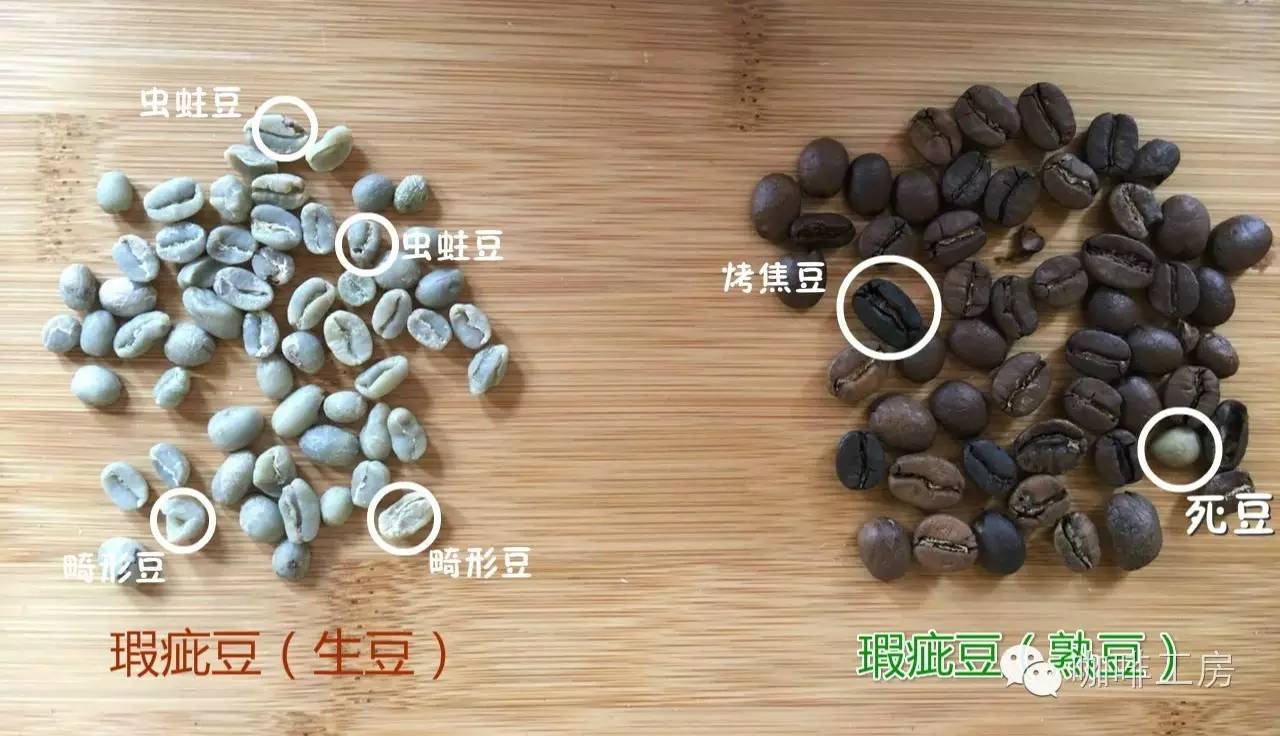
A simple introduction to the world of defective coffee beans
Professional barista communication, please pay attention to coffee workshop (Weixin Official Accounts cafe_style ) 01 Coffee growing environment Coffee beans in appearance differences come from different growing environments, coffee growth zone is usually Tropic of Cancer and Tropic of Cancer and tropical areas near the equator. Unique coffee varieties are grown in special growing areas, and there are many types of coffee beans and growing environments. for finishing
- Next

[baking] Kenya baking curve sharing (part 1) | Coffee workshop
Professional baristas exchange please follow the coffee workshop (Wechat official account cafe_style) Kenya baking sharing (above) this time to share with you two different grades of Kenyan beans, one is AA and the other is PB has its own characteristics, I personally like Kenya very much, its regional flavor is berry acid, super acidity and sweetness are unique in other beans, very much.
Related
- Beginners will see the "Coffee pull flower" guide!
- What is the difference between ice blog purified milk and ordinary milk coffee?
- Why is the Philippines the largest producer of crops in Liberia?
- For coffee extraction, should the fine powder be retained?
- How does extracted espresso fill pressed powder? How much strength does it take to press the powder?
- How to make jasmine cold extract coffee? Is the jasmine + latte good?
- Will this little toy really make the coffee taste better? How does Lily Drip affect coffee extraction?
- Will the action of slapping the filter cup also affect coffee extraction?
- What's the difference between powder-to-water ratio and powder-to-liquid ratio?
- What is the Ethiopian local species? What does it have to do with Heirloom native species?

